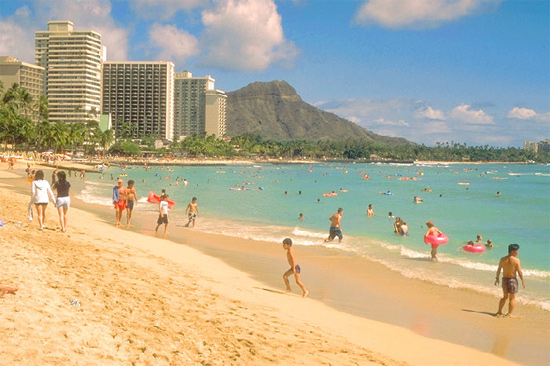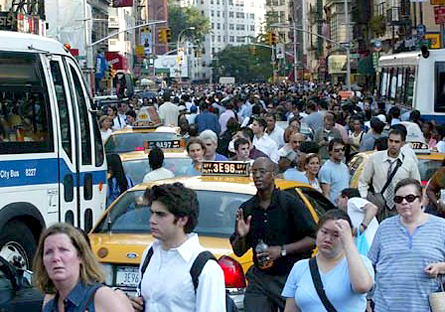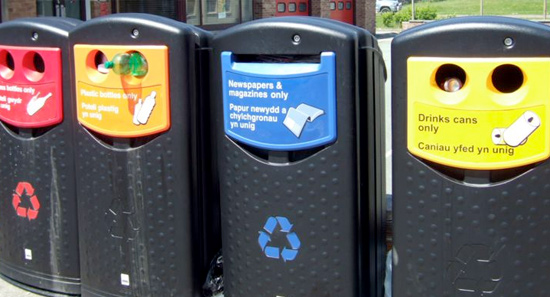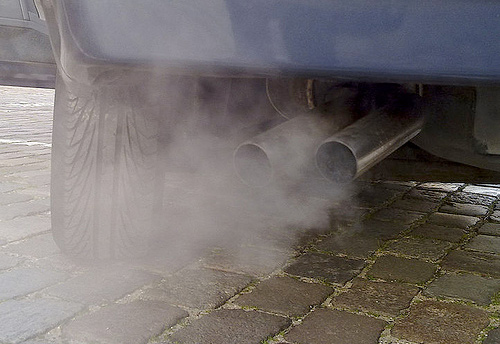
Source: Waikiki Beach, Honolulu, Hawaii, Wikimedia
Take a closer look at some of the key words for this lesson. Use the photos to help you understand the definitions.
Climate refers to the long term balance of temperature and precipitation in a particular region. Climate and weather are different. Climate is the overall, big picture and weather is the day to day changes. This photo is of a sunny Waikiki Beach in Honolulu, Hawaii. Hawaii is a popular vacation spot because of its warm and tropical climate. While the climate is warm, the weather could be hot one day, and windy and rainy another day.

Source: Waikiki Beach, Honolulu, Hawaii, Wikimedia
When you think of population density you should think of how crowded a place is. Population density is actually a measurement of how many people live within one square mile. The photo below is of a typical day in New York City, one of the most populous cities in the world. Notice that the people outnumber the many modes of transportation on the street. New York City has a humid subtropical climate, which means it has hot, humid summers and cold winters. Because New York City generally has all four seasons, many people are attracted to the area.

Source: Downtown New York City, Wordpress
Here's a helpful way to remember Population Density: |
Less people per square mile |
= |
Lower population density |
& |
More people per square mile |
= |
Higher population density |
A resource can be defined as anything useful to humans to produce needs and wants. A renewable resource is a resource, such as water, metal, or wood that can be regenerated; it is a resource that can be recycled and used again. Water is a precious renewable resource; it can be filtered, cleaned, and reused.

Source: Photo, Aber Recycle, Wikimedia
The recycle bins in the photo above are examples of how society has become more aware of how important renewable resources are to our environment and how everyone can participate in recycling. In this photo, each bin recycles a specific item (from left to right) glass bottles, plastic bottles, newspapers and magazines, and aluminum cans.
Opposite from a renewable resource, a non-renewable resource is a resource that cannot be regenerated, recycled, and reused. Coal is a natural resource that is non-renewable; once it is burned, it's gone, while, it takes millions of years to form, it can be called non- renewable for human use.

Source: Photo, Automobile exhaust gas, Flickr.
The photo above is of a common occurrence, it is a photo of a car's exhaust. Just as in coal, oil becomes non-renewable once it is burned for heat or light. Once made into gasoline and burned in cars, it cannot be recycled or reused. Oil also takes millions of years to form under Earth's surface.